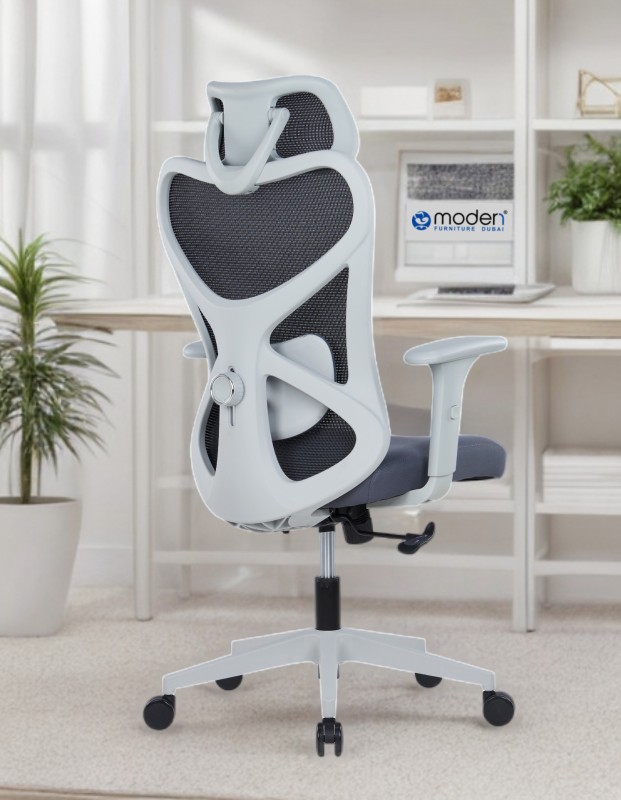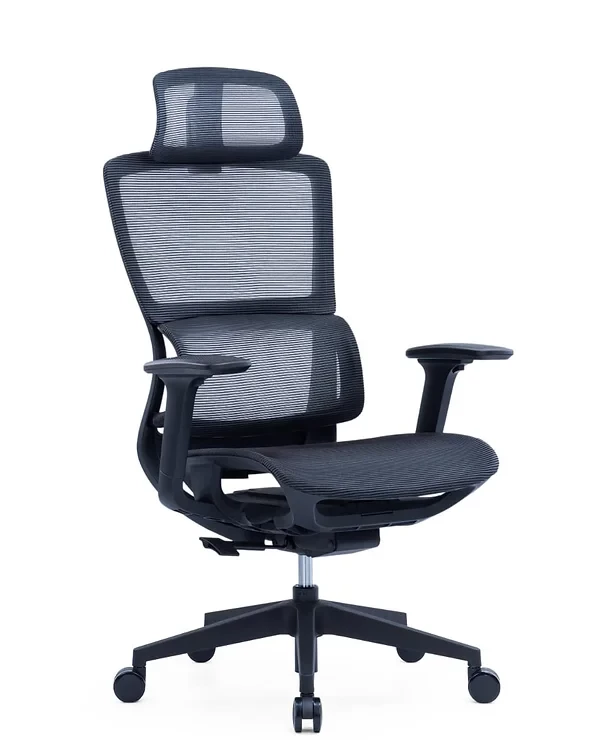
The Science Behind S-Shaped Office Chairs
Introduction
The shape of an office chair plays a critical role in how it supports your body throughout the workday. Among ergonomic designs, S-shaped chairs stand out for their intentional mimicry of the spine’s natural curve. These chairs are not just stylish; they’re built on principles of biomechanics and spinal health. In this article, we dive into the science behind S-shaped office chairs, their benefits, and why they’ve become a top choice for people seeking better posture and long-term comfort.
1. Understanding the S-Shape Structure
The term “S-shape” refers to how the backrest of the chair curves—mirroring the natural curve of the human spine. This design supports the cervical, thoracic, and lumbar regions without forcing the back into a rigid position. The contour encourages natural posture, reducing the tendency to slouch or hunch over.
2. Promoting Natural Spinal Alignment
The human spine isn’t straight—it has a slight S-curve that balances movement and support. An S-shaped chair back promotes this alignment, keeping your head, shoulders, and hips in harmony. This natural alignment helps reduce pressure on spinal discs and muscles during prolonged sitting.
3. Lumbar Support That Adapts
A defining feature of S-shaped chairs is their built-in lumbar support, positioned where your lower back curves inward. This targeted support minimizes lower back fatigue and helps prevent long-term strain. Some models even include adjustable lumbar sections that adapt to different body types.
4. Encouraging Dynamic Sitting
S-shaped chairs are designed to allow subtle movements and flexibility. Unlike stiff backrests, they offer gentle resistance that encourages micro-adjustments, keeping your muscles engaged and circulation flowing throughout the day.
5. Reducing Pressure Points
The ergonomic contour of an S-shaped chair helps distribute body weight more evenly, reducing pressure on the hips, thighs, and spine. This lowers the chances of developing discomfort or numbness, especially during long work sessions.
6. Supporting the Thoracic Region
In addition to lumbar support, S-shaped chairs provide stability for the upper back and shoulders. This full-length support helps maintain an upright posture and prevents rounding of the shoulders—a common issue among desk workers.
7. Enhancing Comfort Over Time
The more your chair mirrors your body’s natural shape, the less energy your muscles need to maintain posture. With consistent use, S-shaped chairs promote comfort that builds over time, reducing the aches and fatigue often associated with standard chairs.
8. Ideal for Long Work Hours
For professionals who spend extended periods seated, an S-shaped chair can make a significant difference in daily comfort. The ergonomic curve minimizes strain buildup, supporting sustained focus and performance across the workday.
9. Aesthetic Meets Function
Beyond their ergonomic function, S-shaped chairs often feature sleek, modern designs that elevate the look of your office. Their elegant curves complement contemporary interiors while providing serious health benefits.
10. Scientifically Backed Ergonomics
The design of S-shaped chairs is supported by research in ergonomics and biomechanics. Studies show that chairs aligning with the spine's natural curves reduce musculoskeletal disorders and improve sitting posture, making them a wise investment for both health and productivity.
Additional Considerations When Choosing an S-Shaped Chair
Check for Adjustable Features
While the S-shape provides a strong foundation, features like adjustable armrests, tilt control, and seat height enhance usability and comfort for different users.
Consider Breathable Materials
Mesh-backed S-shaped chairs improve ventilation and keep you cooler during long sessions, especially in warmer climates or shared environments.
Test the Lumbar Fit
Make sure the lumbar curve aligns well with your lower back. An ill-fitting chair—even with the right shape—can lead to discomfort over time.
Look for Padded Comfort Zones
Some S-shaped chairs include extra padding along the lumbar and shoulder regions for enhanced comfort, especially if you're seated for multiple hours.
Avoid Overly Rigid Frames
Flexibility is key. A chair that’s too rigid won’t allow your body to move naturally, potentially creating stiffness over time.
Pair with a Proper Desk Height
To get the most from your S-shaped chair, pair it with a desk at the right height to avoid leaning or hunching forward.
Evaluate the Recline Tension
Some models offer recline control, allowing you to adjust how easily the chair tilts backward. This supports a more relaxed sitting posture when needed.
Prioritize Stability and Base Quality
A five-point base and smooth-rolling casters provide balance and mobility, which are crucial in a chair designed for active sitting.
Match Aesthetics with Function
Choose a chair that not only supports your spine but also blends well with your workspace’s color palette and design tone.
Try Before Committing
If possible, test different models to find the one that best matches your spine's curve, especially if you're buying for long-term use.
Recommended Products:

-
Ucomfort Super Ergonomic Executive Office Chair – High Back White
This chair features a refined S-curve with enhanced lumbar and shoulder support, ideal for users who prioritize healthy posture in modern office setups.
-
Chablo Executive High Back Ergonomic Office Chair – Black
With its supportive S-shaped backrest and high adjustability, the Chablo chair offers lasting comfort for long work hours while maintaining a sleek professional design.
Final Thoughts
S-shaped office chairs blend science and comfort to deliver one of the most supportive seating experiences available. Their thoughtful design aligns with the natural curves of your spine, helping to improve posture, minimize fatigue, and boost daily comfort. Whether you're working from home or outfitting a professional office, choosing a well-designed S-shaped chair is a smart investment in your health and productivity.
FAQ
Q: What makes S-shaped chairs different from regular ergonomic chairs?
A: While many ergonomic chairs offer support, S-shaped chairs specifically mimic the spine’s natural curvature, offering more targeted alignment and support across all spinal regions.Q: Are S-shaped chairs good for back pain?
A: Yes, their lumbar and full-spine support helps reduce strain and discomfort, making them a popular choice for individuals with lower back issues or those recovering from posture-related pain.


